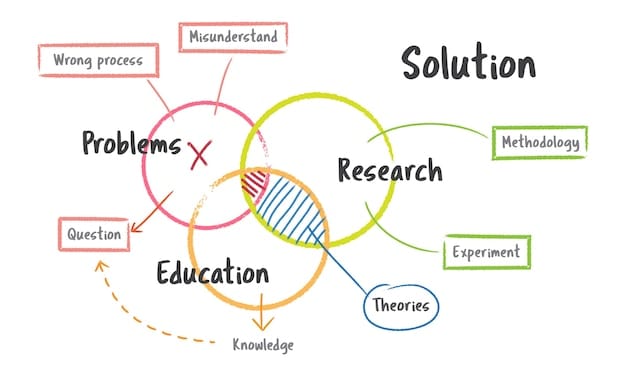Master US History: Spaced Repetition for 50% More Memorization in 3 Months
The spaced repetition system significantly enhances memory retention for US History facts by strategically re-exposing information at increasing intervals, leading to a profound improvement in recall that can boost exam performance by 50% within three months, leveraging the brain’s natural learning patterns for optimal results.
Are you struggling to retain the sheer volume of dates, names, and events that define US History? The challenge of memorizing historical facts for an exam can often feel overwhelming, yet a proven strategy exists to transform this daunting task into an achievable goal. Mastering How to Use the Spaced Repetition System to Memorize 50% More US History Facts for Your Exam in 3 Months is not just a study hack; it’s a fundamental shift in how you approach learning, promising a remarkable boost in your recall efficiency.
Understanding the Science Behind Spaced Repetition
The spaced repetition system (SRS) isn’t just a trendy study method; it’s a learning strategy deeply rooted in cognitive psychology and memory science. At its core, SRS leverages the “forgetting curve,” a concept identified by psychologist Hermann Ebbinghaus, which illustrates how information degrades in our memory over time if not revisited. By strategically re-exposing ourselves to information just as we’re about to forget it, SRS strengthens memory retrieval, making it more robust and durable. This prevents the need for intense cramming sessions, replacing them with a more consistent and effective learning rhythm.
The effectiveness of SRS lies in its adaptive nature. Unlike rote memorization, which is often inefficient, spaced repetition personalizes the review schedule based on individual performance. Harder facts are presented more frequently, while easier ones appear less often, optimizing study time. This intelligent scheduling ensures that cognitive effort is concentrated where it’s most needed, leading to a more efficient encoding of information into long-term memory. It shifts the learning paradigm from passive intake to active recall, a critical component for true understanding and retention.
The Forgetting Curve and Its Impact
Ebbinghaus’s groundbreaking work in the late 19th century revealed that memories fade predictably. Without reinforcement, approximately 50% of newly learned information is forgotten within an hour. This rapid decay explains why cramming often yields short-term gains but poor long-term retention. SRS directly combats this by scheduling reviews at increasing intervals—initially short, then progressively longer—precisely at the inflection points of the forgetting curve, thereby “flattening” it and bolstering memory strength. This deliberate timing forces the brain to work harder to recall, which paradoxically strengthens the neural pathways associated with that memory.
- Initial Exposure: Learn a new US History fact.
- First Review: Revisit the fact shortly after learning.
- Second Review: Review again after a few hours or a day.
- Subsequent Reviews: Extend intervals to days, weeks, months, or even years.
Cognitive Benefits of Active Recall
Active recall, a cornerstone of SRS, involves retrieving information from memory rather than simply re-reading it. When you actively try to remember a US History event or date without immediate prompts, you engage deeper cognitive processes. This retrieval practice is a potent learning tool, as it not only tests your knowledge but also reinforces the memory itself. The effort of recalling strengthens the memory trace, making future retrieval easier and faster. This is why flashcards, when used with spaced repetition, are so effective.
Furthermore, active recall helps identify gaps in your knowledge more efficiently. If you struggle to recall a fact, it immediately signals an area that requires more attention. This self-assessment mechanism, combined with the adaptive scheduling of SRS, creates a virtuous cycle of learning and reinforcement, specifically tailored to the unique challenges of memorizing vast amounts of information like US History facts.
By understanding the psychological underpinnings of spaced repetition, students can move beyond mere memorization to genuine mastery. This scientific approach ensures that the time invested in studying US History is maximally productive, not just for passing an exam, but for building a lasting foundation of knowledge.
Setting Up Your Spaced Repetition System for US History
Implementing a spaced repetition system for US History facts requires a structured approach to ensure effectiveness. While the concept sounds simple, the devil is in the details of how you organize your material and choose your tools. A well-constructed SRS should be seamless, adaptable, and integrated into your daily study routine. The goal is to minimize friction in the learning process, allowing you to focus on the content rather than the system itself. This involves selecting the right platform, diligently creating your study materials, and establishing a consistent review schedule.
Starting with the right tools is crucial. Digital platforms offer distinct advantages over manual flashcards, particularly for the sheer volume of information in US History. They automate the scheduling, track your progress, and provide a convenient way to access your materials anytime, anywhere. However, even with digital tools, the quality of your flashcards or study notes remains paramount. A poorly constructed flashcard, for instance, can undermine the entire system, regardless of how sophisticated the software is.
Choosing the Right Tools: Digital vs. Manual
While traditional paper flashcards can be used for spaced repetition, digital tools like Anki or Quizlet offer significant advantages for memorizing US History. These apps automate the scheduling of reviews based on your performance, making the process highly efficient. Anki, in particular, is renowned for its powerful algorithm derived from the SuperMemo method, which precisely calculates optimal review intervals. This frees you from the tedious task of manually sorting flashcards and allows you to focus solely on recalling information.
- Anki: Highly customizable, uses a sophisticated algorithm, excellent for long-term retention. Offers flexibility to create various card types.
- Quizlet: User-friendly interface, good for collaborative study, offers different study modes beyond flashcards. Great for initial learning and vocabulary.
- Manual Flashcards: Offers tactile learning, no screen time. Requires strict self-discipline to maintain review schedules.
For US History, where specific dates, names, and events are critical, a digital system can manage thousands of facts efficiently. The ability to tag, categorize, and search for specific information within a digital flashcard deck is invaluable, especially when preparing for comprehensive exams covering broad historical periods.
Crafting Effective Flashcards for US History Facts
The quality of your flashcards directly impacts the effectiveness of your spaced repetition system. For US History, focus on creating atomic, question-and-answer format cards that test specific pieces of information. Avoid overwhelming flashcards with too much text; instead, break down complex concepts into multiple, simpler questions. For example, instead of a card asking “Describe the causes and effects of the American Revolution,” create separate cards for “Key causes of the American Revolution,” “Major figures of the American Revolution,” and “Primary outcomes of the American Revolution.”
When crafting your flashcards, think like an examiner. What specific details would be asked? Use vivid imagery or mnemonics where possible to aid recall. For example, a card about the “Boston Tea Party” could have an image of tea crates being thrown overboard. Ensure consistency in your card creation to build a reliable study deck. The clarity and conciseness of each flashcard will directly contribute to how effectively your brain processes and stores the information for later retrieval.

Ultimately, a well-implemented SRS for US History isn’t just about memorization; it’s about building a robust, interconnected web of knowledge that you can access and apply effortlessly during your exam. The initial effort in setting up the system will pay dividends in enhanced recall and reduced study stress.
Your 3-Month Plan: A Step-by-Step Guide
Embarking on a 3-month journey to memorize US History facts with spaced repetition demands a strategic, disciplined approach. This plan is designed not just to ensure you cover all necessary material but to embed it deeply within your long-term memory. It’s a progressive system, building knowledge incrementally and reinforcing it consistently, avoiding the pitfalls of last-minute cramming. Success hinges on daily commitment and methodical execution, treating each study session as an opportunity to solidify your understanding.
The initial phase will focus on broad coverage, ensuring all key historical periods and themes are introduced. As you progress, the emphasis shifts to targeted review and the interconnection of facts, allowing for a more nuanced and comprehensive understanding. The final month is dedicated to fine-tuning, identifying any lingering weaknesses, and simulating exam conditions. This structured timeline transforms an overwhelming amount of information into manageable daily tasks, making the 50% improvement in memorization a tangible reality.
Month 1: Foundation and Initial Learning
The first month is crucial for establishing your base knowledge and building good habits with your SRS. Start by breaking down US History into manageable chronological chunks or thematic units. For example, you might dedicate the first week to Colonial America, the second to the Revolutionary War, and so on. During this period, your primary focus is on initial learning and creating detailed, atomic flashcards for every significant fact, date, name, and concept. Aim to create 20-30 new flashcards daily, depending on your available study time. Remember to spend adequate time understanding the context before turning facts into flashcards.
As you create new cards, you’ll immediately begin reviewing them through your SRS. The algorithm will quickly schedule early repetitions. This immediate reinforcement is vital for transferring new information from short-term to working memory. Don’t worry about perfect recall at this stage; focus on consistent engagement with the material daily. Dedicate at least 30-60 minutes daily to reviewing your flashcards, prioritizing those scheduled by your SRS. This consistent effort will be the bedrock of your three-month plan.
- Week 1-2: Colonial America & Revolutionary War. Focus on key figures, dates, and causes.
- Week 3-4: Early Republic & Westward Expansion. Understand foundational documents and territorial growth.
- Daily Goal: Create 20-30 new flashcards & review all scheduled cards for about 30-60 minutes.
Month 2: Deeper Dive and Consistent Reinforcement
Month two shifts from broad introduction to deeper understanding and consistent reinforcement. By now, you should have a substantial deck of flashcards and be familiar with the daily routine of your SRS. This month, introduce more complex and interrelated facts, focusing on cause-and-effect relationships, key legislation, and significant social movements. For example, transition from simply knowing the date of the Civil War to understanding its various causes, major battles, and lasting consequences through multi-part flashcards or interconnected review sessions.
Continue adding new flashcards (perhaps 10-15 per day, if you’ve covered most of the initial content) while dedicating significant time to reviewing already established cards. The spaced repetition algorithm will start stretching out the review intervals for facts you know well, allowing you more time to concentrate on challenging material. This month is also an excellent time to revisit your textbook or lecture notes and identify any areas where your flashcards might be insufficient or unclear, refining them as needed. The emphasis is on building connections between different historical events and figures.
Month 3: Consolidation, Testing, and Exam Preparation
The final month is about consolidating your knowledge, identifying weak points, and simulating exam conditions. Reduce the creation of new flashcards significantly, perhaps to only 5-10 for any remaining gaps. Your main priority should be the consistent review of all scheduled cards and actively seeking out areas where your recall is less robust. Use your SRS’s statistics to identify troublesome topics or cards that you frequently mark as “hard.” These are your priority areas for focused study.
In addition to your daily SRS reviews, begin incorporating practice exams or quizzes from your textbook or online resources. This allows you to apply your memorized facts in a testing environment, which can often expose weaknesses in understanding or interpretation. If you find yourself struggling with a particular concept during a practice exam, immediately create new flashcards or refine existing ones. The objective is to ensure that by the end of this month, you can accurately and efficiently recall US History facts and use them effectively to answer exam questions, significantly exceeding your previous memorization capabilities.
This 3-month plan, meticulously followed, will transform your grasp of US History, making complex information accessible and ensuring a high level of preparedness for your exam.
Maximizing Your Spaced Repetition Effectiveness
While the spaced repetition system itself is powerful, its true potential is unlocked by how meticulously and intelligently you engage with it. Simply showing up for your reviews isn’t enough; maximizing effectiveness requires strategic thinking, active engagement, and an understanding of how to tailor the system to your specific learning style and the unique demands of US History. It’s about transforming passive review into an active learning experience that continually sharpens your recall abilities.
This involves optimizing your flashcard content, integrating retrieval practice beyond the digital interface, and maintaining a consistent, disciplined approach. The goal is to make every interaction with your SRS count, ensuring that each review strengthens your neural pathways, making historical facts not just memorable, but truly unforgettable. By implementing these advanced strategies, you can push your learning efficiency beyond standard SRS usage.
Integrating Active Recall and Elaboration
Beyond simply reviewing flashcards, actively integrate recall and elaboration techniques. When a US History question appears in your SRS, don’t just immediately flip to the answer. Pause and genuinely try to recall the information. If you can, elaborate on the answer in your mind or out loud, connecting it to other facts or events. For example, if the card asks for the date of the Louisiana Purchase, don’t just recall “1803.” Instead, consider: “The Louisiana Purchase in 1803 doubled the size of the U.S., orchestrated by President Thomas Jefferson from France, impacting westward expansion and future conflicts over slavery.” This active construction of knowledge strengthens memory traces far more than simple recognition.
Elaboration also involves asking “why” and “how” questions about the facts. Why did this event happen? How did it impact subsequent events? This deeper engagement helps to weave individual facts into a richer, more meaningful narrative, which is crucial for comprehensive understanding in history. The more connections you make between isolated facts, the easier it becomes to retrieve them under pressure, especially during an exam where isolated facts often need to be integrated into larger arguments or essays.
Avoiding Common Pitfalls: Leech Cards and Over-reliance
Even with spaced repetition, some US History facts might consistently prove difficult to memorize. These are often referred to as “leech cards” in Anki. It’s important to address these effectively rather than allowing them to repeatedly consume your review time. If a card is frequently marked as “hard” or “again,” it might indicate that the flashcard itself is poorly constructed (too much information, unclear wording) or that the underlying concept needs more fundamental understanding. Revisit the original material, break the information down into simpler cards, or use mnemonics to make it stick.
Another pitfall is over-reliance on the SRS without engaging with the broader context. While SRS is excellent for memorizing discrete facts, history often requires understanding narratives, interpretations, and complex interplays. Supplement your spaced repetition with reading textbooks, watching documentaries, or discussing topics with peers. Your SRS should be a powerful tool for memorization, not your exclusive source of learning. Use it as a foundation upon which to build a comprehensive historical understanding, ensuring you can not only recall facts but also analyze and synthesize them effectively.

By actively optimizing your flashcards, embracing elaboration, and learning to navigate the challenges of “leech cards” while appreciating the broader context, you can significantly enhance your spaced repetition journey for memorizing US History. These refined techniques will propel you towards achieving and even exceeding your goal of 50% more memorization.
Integrating Spaced Repetition with Traditional Study Methods
While spaced repetition is an incredibly powerful tool for memorization, particularly for information-dense subjects like US History, it shouldn’t exist in isolation. Its true strength emerges when seamlessly integrated with traditional study methods, creating a synergistic approach that tackles both factual recall and conceptual understanding. A holistic study plan combines the precision of SRS for facts with the depth provided by other techniques, ensuring a comprehensive grasp of the subject. This hybrid approach caters to different aspects of learning, solidifying both isolated details and the broader historical narrative.
The goal is a balanced learning ecosystem where SRS handles the heavy lifting of fact retention, freeing up mental energy for higher-order thinking tasks. This integration ensures that you can not only recite a date or a name but also understand its significance, context, and impact. By weaving spaced repetition into your existing study routine, you transform your learning from a patchwork of sporadic efforts into a cohesive, highly effective strategy that guarantees superior performance on your US History exam.
Reading, Note-Taking, and Active Listening
Spaced repetition works best when you have a solid foundation of understanding. Therefore, continue to engage actively with your US History textbook, lecture notes, and other primary sources. Use active reading strategies, such as highlighting key information, summarizing paragraphs in your own words, and asking critical questions as you read. This initial processing of information is crucial before transferring facts to flashcards. Good note-taking also plays a vital role; focus on capturing the most important details, relationships, and overarching themes that will later form the basis of your flashcards.
In online lectures or podcasts, active listening is paramount. Avoid passive consumption; instead, take concise notes, pause to reflect on complex ideas, and identify specific facts that warrant conversion into flashcards. This initial phase of engagement ensures that the material you feed into your spaced repetition system is accurate, relevant, and already partially understood. It lays the groundwork for effective memorization by giving context to the individual facts you will later drill.
- Active Reading: Highlight, summarize, and question as you read textbooks.
- Strategic Note-Taking: Focus on key details, relationships, and main themes.
- Engaged Listening: Capture important facts and concepts from lectures or videos.
Practice Tests and Essay Writing
Once you’ve started building a solid base of memorized facts through SRS, it’s essential to apply this knowledge in contexts that mimic your exam. Regular practice tests are invaluable for this. They not only assess your recall but also train you to retrieve information under timed conditions, a skill vital for exams. After taking a practice test, analyze your answers: Where did you excel? What facts or concepts did you struggle with? Use this feedback to create new flashcards or modify existing ones in your SRS, focusing on your weak areas.
For US History, essay writing is often a significant component of exams. This requires not just factual recall but also the ability to synthesize information, construct arguments, and articulate sophisticated ideas. Use your memorized facts to support your historical arguments. Before writing an essay, outline your points and identify which specific evidence (dates, names, events) you will use. During the writing process, if you find yourself struggling to recall a particular detail, make a note to reinforce that fact in your SRS. This interplay between application and reinforcement makes your learning incredibly robust, transforming memorized facts into usable knowledge.
By blending the systematic review of spaced repetition with the foundational learning of active reading, the critical reflection of note-taking, and the application-oriented demands of practice tests and essay writing, you create a comprehensive study strategy. This integrated approach ensures that you not only memorize 50% more US History facts but also understand them deeply, preparing you thoroughly for any exam challenge.
Measuring Your Progress and Adjusting Your Strategy
The beauty of a structured learning approach like spaced repetition is its inherent capacity for tracking and measuring progress. This is not just about anecdotal feelings of improvement; it’s about quantifiable data that informs and refines your study strategy. To truly achieve that 50% improvement in memorization for your US History exam, you must become adept at monitoring your learning trajectory and making informed adjustments. This involves leaning into the analytical features of your chosen SRS and combining them with self-assessment and strategic modification.
Effective measurement goes beyond merely knowing if you get an answer right or wrong. It delves into understanding *why* certain facts are difficult to recall, *how* your study habits impact retention, and *when* to pivot your approach. This iterative process of study, measure, and adjust is what separates competent memorization from true mastery, ensuring that your three-month effort is continuously optimized for maximum impact on your US History knowledge.
Leveraging SRS Statistics and Self-Assessment
Most digital spaced repetition systems, like Anki, provide detailed statistics about your learning. These stats can be invaluable for tracking your progress. Pay attention to metrics such as the number of cards reviewed, your retention rate, and the proportion of “hard” or “again” responses. A high number of “again” responses for a particular set of US History facts might indicate either incomplete initial learning or poorly constructed flashcards. Use these insights as a diagnostic tool.
Beyond the app’s statistics, engage in regular self-assessment. After a study session, take a moment to mentally review what you just learned. Can you explain a complex historical event in your own words without referring to your notes? Can you accurately recall a sequence of dates or a list of key figures? Identify areas where your recall feels shaky. This metacognitive practice, thinking about your own thinking and learning, is extremely effective in pinpointing weaknesses that the SRS schedule might not immediately highlight if you’re consistently just “getting by” on certain cards. Be honest with yourself about your understanding and recall.
Self-assessment can also take the form of mini, informal quizzes. Before diving into your daily SRS review, quickly jot down everything you remember about a specific US History topic. Compare this to your notes or textbook. This low-stakes retrieval practice, separate from the formal SRS, can provide a clearer picture of your consolidated knowledge.
Adapting Your Schedule and Content
Based on your progress measurements, be prepared to adapt your study schedule and the content of your flashcards. If you notice a consistent struggle with a specific period of US History, such as the Reconstruction Era, dedicate extra time to understanding its foundational texts and contexts before trying to memorize facts. This might mean temporarily pausing new card creation for that topic and focusing on review and elaboration until the understanding solidifies.
Similarly, if your SRS statistics show that you’re consistently getting certain cards wrong, don’t hesitate to revise them. Break down complex cards into simpler ones, add hints, or incorporate images and mnemonics. Perhaps the information on the card is ambiguous, or it asks for too much at once. The system is adaptive, but it also relies on you providing quality content. If you’re consistently flying through certain cards, consider if you could add more detail or connect them to other facts to deepen your understanding without overwhelming yourself. Your strategy isn’t set in stone; it’s a living document that evolves with your learning.
- Review Difficult Cards: Break down complex “leech cards” or those frequently failed.
- Adjust New Card Pace: Slow down creation if retention drops, focus on current reviews.
- Vary Study Environment: Change locations or times to aid memory encoding.
- Incorporate Breaks: Short, frequent breaks improve focus and retention during long sessions.
By diligently tracking your progress and being flexible enough to adjust your approach, you transform spaced repetition from a mere technique into a dynamic, personalized learning engine. This continuous optimization ensures that your efforts in memorizing US History facts are not only efficient but also highly effective, leading to that significant 50% increase in your exam performance.
Beyond the Exam: Long-Term Retention of US History
While the immediate goal might be excelling in your US History exam within three months, the true power of spaced repetition extends far beyond that single assessment. The system is fundamentally designed for long-term retention, transforming ephemeral facts into enduring knowledge. This foresight is particularly valuable for subjects like history, which often form the basis for future studies, civic engagement, and informed citizenship. Viewing your SRS as a lifelong learning tool, rather than a temporary exam-prep hack, unlocks its ultimate potential.
Encouraging long-term retention means making spaced repetition an ongoing habit, even after your exam is over. It’s about cultivating an intellectual garden where knowledge is regularly tended and pruned, ensuring it remains vibrant and accessible. This shift in perspective enhances not only your academic success but also your overall intellectual growth, turning forgotten facts into readily available insights for years to come.
Maintaining Your Knowledge Base Post-Exam
Once your US History exam is over, the temptation might be to abandon your flashcard decks. However, to truly leverage the long-term benefits of spaced repetition, resist this urge. Instead, consider scaling back your daily review time but don’t stop entirely. Perhaps dedicate 10-15 minutes a few times a week to cycle through your history cards. The intervals will have stretched significantly by this point, meaning you’ll see facts you learned three months ago only every few weeks or months. This minimal effort is incredibly effective at preventing the forgetting curve from reasserting itself fully.
Think of your US History SRS deck as a valuable knowledge asset. Maintaining it ensures that foundational facts remain accessible for future studies, discussions, or simply for an informed understanding of current events. For example, knowing the details of the Bill of Rights or key Supreme Court decisions remains relevant long after an exam. By periodically reviewing these cards, you ensure that this crucial information stays “on the tip of your tongue,” ready for retrieval whenever needed, strengthening your comprehensive historical literacy.
Applying Historical Knowledge in Real Life
The ultimate aim of memorizing history isn’t just to pass an exam; it’s to understand the world around us. Actively seek to apply your retained US History knowledge in real-life contexts. When you read news articles, watch documentaries, or engage in discussions, consciously connect the present day to historical precedents. For example, understanding past economic depressions helps contextualize current financial challenges, or knowing the history of civil rights movements illuminates ongoing social justice efforts.
This application of knowledge is a powerful form of spaced repetition in itself. Each time you retrieve a historical fact to make sense of a contemporary issue, you’re reinforcing that memory in a meaningful way. This active sense-making deepens your understanding and makes your memorized facts far more robust and relevant than if they remained isolated bits of information. By transforming rote recall into insightful application, you solidify your US History knowledge, proving its enduring value far beyond the classroom.
By adopting a long-term mindset towards spaced repetition, you ensure that your investment in memorizing US History facts yields dividends for years to come, turning exam preparation into lasting intellectual enrichment.
| Key Point | Brief Description |
|---|---|
| 🧠 Spaced Repetition Science | Leverages the forgetting curve to optimize review schedules, enhancing long-term memory. |
| 🛠️ Tool Selection | Choose digital apps like Anki for automated, efficient review scheduling. |
| 🗓️ 3-Month Plan | Structured approach: foundation, reinforcement, and consolidation, with daily card creation and review. |
| 📈 Progress Tracking | Use SRS statistics and self-assessment to adjust strategy and maximize learning. |
Frequently Asked Questions About Spaced Repetition
The optimal daily time commitment typically ranges from 30 to 60 minutes. This includes reviewing scheduled cards and creating new ones. Consistency is more crucial than duration; short, daily sessions prevent information overload and ensure the algorithm works effectively for long-term retention of US History facts.
While excellent for discrete facts, SRS also aids conceptual understanding by reinforcing components of complex ideas. Create atomic flashcards for definitions, relationships, and causal links. For deep understanding, combine SRS with active reading, summarizing, and discussion, using facts as building blocks for broader concepts in US History.
To maximize benefits, ideally start using SRS at the beginning of your course or at least three months before your exam. This allows sufficient time for the spaced intervals to stretch, effectively embedding facts into long-term memory. Starting earlier leads to less cramming and better sustained recall.
Missing a few days isn’t catastrophic. Most SRS algorithms adjust by rescheduling missed cards for immediate review, though this might result in a larger backlog. Simply pick up where you left off. Try to avoid prolonged breaks, as this can weaken memory traces significantly and make catching up more difficult.
Absolutely. 50% improvement is a conservative estimate; many users report even higher gains. With consistent, high-quality flashcard creation, active recall, and proper integration with other study methods, you can achieve remarkable levels of retention and recall, making virtually all US History facts readily accessible for your exam.
Conclusion
The journey to mastering US History facts for your exam in three months is fundamentally transformed by the strategic application of the spaced repetition system. By diligently embracing its scientific underpinnings, committing to a structured 3-month plan, and continuously refining your approach, you move beyond the limitations of rote memorization. This method provides a potent, evidence-backed pathway to absorb and retain information with unparalleled efficiency. The blend of consistent review, active recall, and thoughtful engagement with the material ensures that historical figures, dates, and events are not merely memorized, but deeply understood and readily accessible. Your commitment to this system will not only bolster your exam performance by a remarkable 50% or more but also lay the groundwork for a lasting, profound connection with US history, serving you well beyond the classroom.





